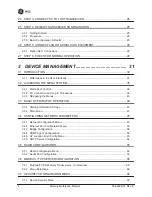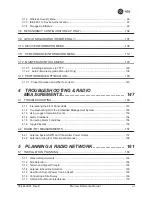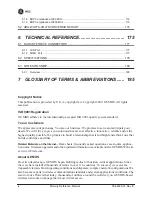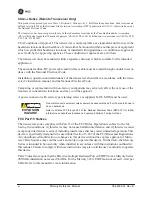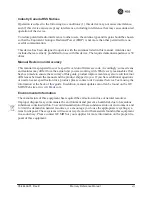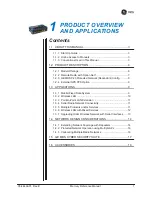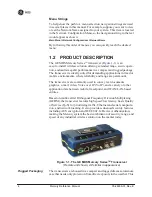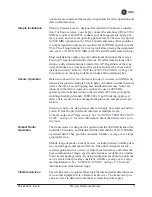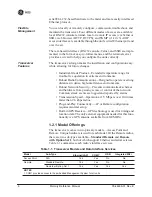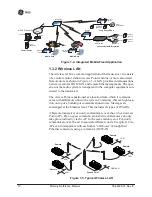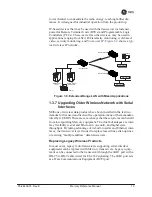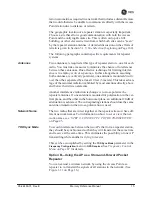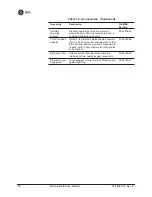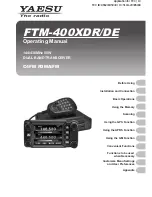
05-4446A01, Rev. E
Mercury Reference Manual
7
Available Frequency Bands
At the time of publication, Mercury transceivers are offered in two dif-
ferent frequency bands: 902-928 MHz (Mercury 900) and 3.65–3.70
GHz (Mercury 3650). The 900 MHz unit operates in a license-free spec-
trum (frequency hopping spread spectrum—FHSS), which may be used
by anyone in the USA, provided FCC Part 15 rules are observed.
Canada, and certain other countries allow license-free operation in this
band—check your country’s requirements.
The 3.65–3.70 GHz radio operates in a “registered” band using conten-
tion-based protocol, which provides additional protection from interfer-
ence, but it requires FCC registration before operation can begin. Other
restrictions may apply based on your location and “grandfathered” FSS
users. Check local requirements before operation. GE MDS has pub-
lished a whitepaper containing frequently asked questions about the
3.65–3.70 GHz band. To obtain a copy, request publication
05-4734A02. (NOTE: 3650 MHz is for APs and Fixed Remote stations.)
Operationally, the Mercury 3650 has two key differences from the Mer-
cury 900: First, it operates on a different RF band (3.65–3.70 GHz).
Second, it only requires GPS for TDD synchronization of the Access
Points, which may or may not be needed for an installation.
Access Point or Remote?—Identification Tip
The outward appearance of AP and Remote radios is nearly identical,
however, the hardware for each type is different and they are not inter-
changeable. An quick way to identify them is to observe the color of the
gasket seal in the center of the radio case. APs have a black gasket,
while Remote units have a yellow gasket.
In addition to gasket color, a label on the top of each radio identifies it
as an AP or Remote unit. If the label shows an –A suffix, it is an AP. If
it shows a –R suffix, it is a Remote.
1.2.2 Remote Radio with Option Set 1
The “Option Set 1” Remote is similar to and compatible with the stan-
dard Mercury Remote. It contains the same 900 MHz radio, user inter-
face, and primary functionality as the Standard Remote. The Standard
Remote can be directly replaced with the Option Set 1 Remote. The key
differences are the additional physical interfaces: an IEEE 802.11b/g
WiFi networking module, a USB device port, a USB host port, and a
second Ethernet port on the radio enclosure.
The USB ports are used for device management. The host port accepts
a flash drive and can be used to transfer firmware and configuration
files. The two Ethernet ports are connected to an internal, integrated
switch and included in the Layer 2 bridge.
Summary of Contents for Mercury 3650
Page 9: ...viii Mercury Reference Manual 05 4446A01 Rev E ...
Page 11: ...2 Mercury Reference Manual 05 4446A01 Rev E ...
Page 31: ...22 Mercury Reference Manual 05 4446A01 Rev E ...
Page 155: ...146 Mercury Reference Manual 05 4446A01 Rev E ...
Page 157: ...148 Mercury Reference Manual 05 4446A01 Rev E ...
Page 171: ...162 Mercury Reference Manual 05 4446A01 Rev E ...
Page 185: ...176 Mercury Reference Manual 05 4446A01 Rev E ...
Page 201: ...192 Mercury Reference Manual 05 4446A01 Rev E ...


